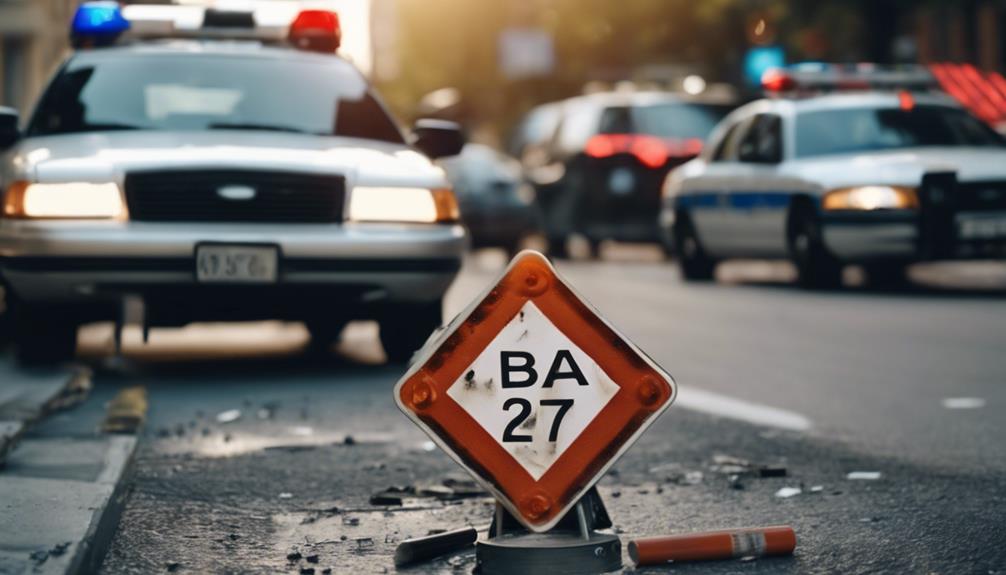When it comes to UK road signs, font choice is key for clear communication. Legible typefaces such as Transport and Motorway are preferred for easy reading. Size, spacing, and color contrast are carefully regulated to enhance visibility. Fonts like Transport have evolved over time for better readability. Understanding factors like font size and style can impact how quickly you grasp information on road signs. By using suitable fonts, road safety can be improved. For more insights on how fonts play an essential role in decoding road signs, further information awaits.
Key Takeaways
- The Transport font enhances readability on UK road signs.
- Font size and spacing are crucial for legibility at various speeds.
- Contrast between text and background aids visibility.
- Standardized font guidelines ensure consistency and effectiveness.
- Font choices impact quick comprehension and safety on the roads.
Importance of Typography in Road Signs
Typography plays a pivotal role in guaranteeing road signs are easily understood by drivers traveling the UK's roadways. Clear and legible typefaces like Transport and Motorway are carefully chosen to enhance visibility and comprehension. The size, spacing, and weight of the letters on road signs are strictly regulated to maximize readability even from a distance. Sans-serif fonts, known for their simplicity and ease of recognition, are preferred for road signs, especially beneficial at high speeds where quick information processing is essential.
Moreover, the color contrast between the text and background on road signs is of utmost significance. For instance, the common combination of white on blue is used for motorway signs to ensure excellent visibility. These design choices aren't arbitrary but are based on research and testing to guarantee that drivers can quickly and accurately interpret the information presented on the signs, promoting safety and efficiency on the roads.
Evolution of Fonts on UK Road Signs
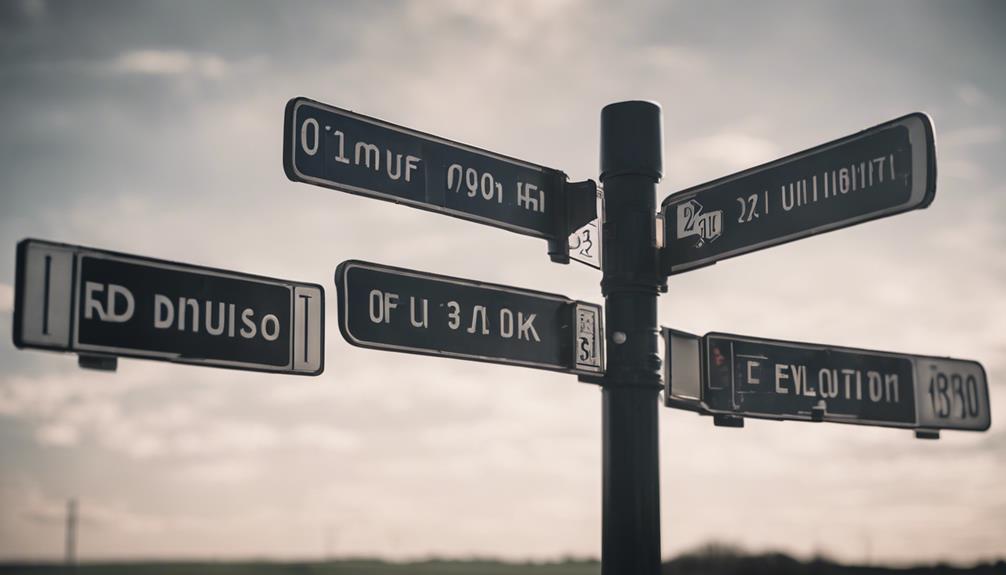
In the domain of UK road signs, the evolution of fonts has been a strategic endeavor aimed at enhancing readability and standardization for drivers. The fonts used on UK road signs have evolved over time, reflecting advancements in design and a dedication to improving safety and communication on the roads.
The introduction of the Transport font in the 1960s marked a significant shift in font design for UK road signs. This font is specifically crafted to guarantee excellent readability at various distances and speeds, catering to the needs of drivers on the road. The unique characteristics of the Transport font, such as wide spacing and clear letterforms, contribute to its distinct style and improved legibility for motorists.
The evolution of fonts on UK road signs showcases a commitment to innovation and usability, ultimately benefiting drivers by providing clear and standardized information on the road.
Understanding Font Legibility Factors
Font legibility on road signs is essential for quick and clear understanding. Factors like letter size and color contrast play a significant role in how easily we can read signs while driving.
Paying attention to these details helps guarantee safer and more efficient navigation on the roads.
Font Size Impact
Considering the impact of font size on UK road signs, we emphasize the significant role it plays in ensuring excellent legibility for drivers at varying speeds. Font size regulation is essential for excellent readability, especially when quick information processing is necessary on the road.
Here are significant points to remember:
- Font size on road signs is carefully determined to cater to drivers traveling at different speeds.
- The height of uppercase letters on signs correlates with the road's speed limit.
- Minimum letter heights vary based on the type of road, with urban areas typically requiring around 150mm and motorways up to 300mm for clear visibility.
Understanding these factors is key to comprehending how font size impacts the legibility of UK road signs effectively. Larger font sizes enhance readability, particularly for drivers traveling at high speeds, ensuring they have ample time to process the sign’s information. Additionally, the appropriate height of road signs plays a crucial role in visibility, ensuring that signs are neither obscured by vehicles nor positioned too low for clear sightlines. By optimizing both font size and the appropriate height of road signs, transportation authorities can greatly improve safety and navigation on UK roads.
Color Contrast Importance
Shifting focus from the impact of font size on UK road signs, we now highlight the significance of color contrast in enhancing font legibility for drivers. Color contrast plays a vital role in making text stand out against the background, improving visibility, especially in challenging lighting conditions.
The UK Road Signs Font Guide emphasizes the importance of using bold, clear fonts with strong color contrast to guarantee easy comprehension of information. Factors such as font size, spacing, and color combinations are key in optimizing readability at varying distances and speeds.
Impact of Font Styles on Signage
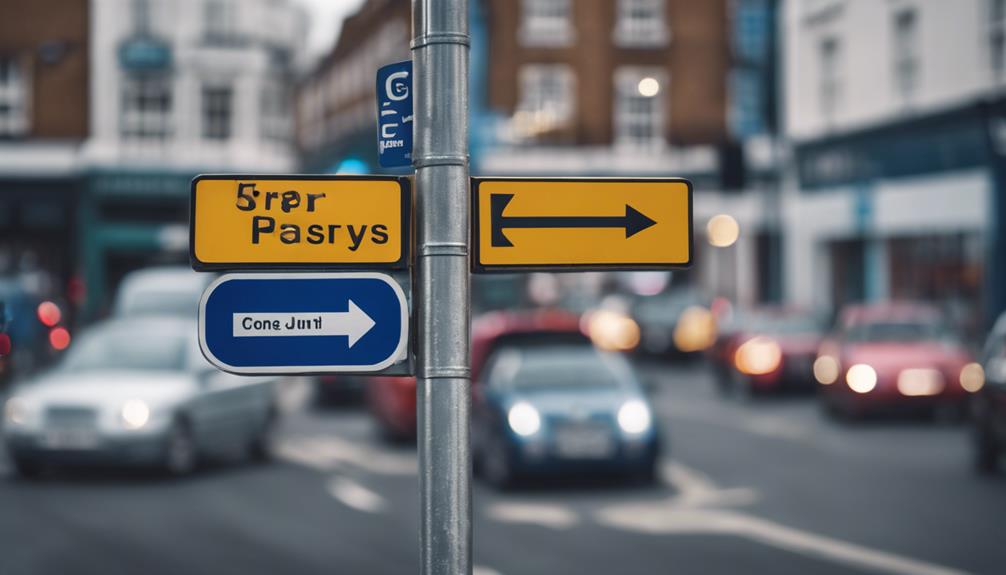
How do different font styles impact the effectiveness of road signage for drivers?
Font styles on road signs can greatly influence how easily drivers can read and understand important information. To guarantee quick comprehension and reaction to road signs, it's vital to use clear, easy-to-read fonts. Additionally, font styles play a significant role in conveying the tone and urgency of messages displayed on road signs. Here are some key points to ponder:
- Different font styles can impact readability and recognition of essential information.
- Clear, easy-to-read fonts are vital for ensuring drivers can quickly grasp the message on road signs.
- Font styles are carefully selected to enhance visibility, legibility, and overall safety for road users.
In the UK, specific font styles like Transport and Motorway are used for consistency and standardization on road signs. By choosing appropriate font styles, road authorities can improve the effectiveness of signage in guiding and informing drivers on the road.
Contrast and Visibility in Sign Fonts
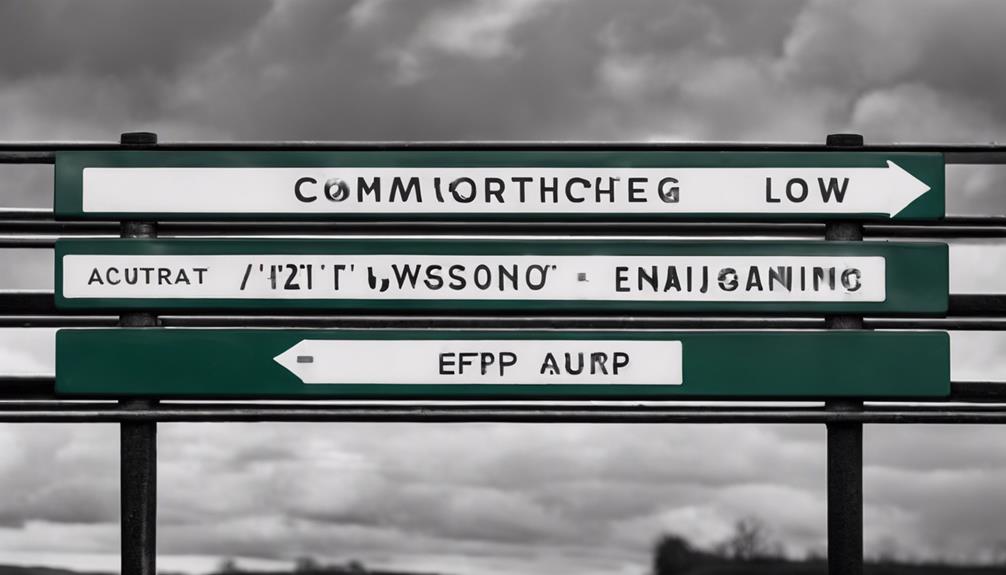
In exploring the effectiveness of road signage for drivers, the contrast and visibility of sign fonts play a pivotal role in guaranteeing quick comprehension and safety on the roads. The font used on UK road signs is meticulously designed to maximize these factors.
Clear, bold typefaces are deliberately chosen to ensure readability from a distance and in varied lighting conditions. The font size and weight are precisely selected to meet strict standards for legibility, particularly important at high speeds.
The decision to utilize uppercase letters in road sign fonts is intentional, as it enhances visibility and recognition, making essential information stand out to drivers. Additionally, the consistent use of font styles across road signs in the UK contributes to a unified visual language that enhances safety and communication on the roads.
Font Regulations and Guidelines in the UK
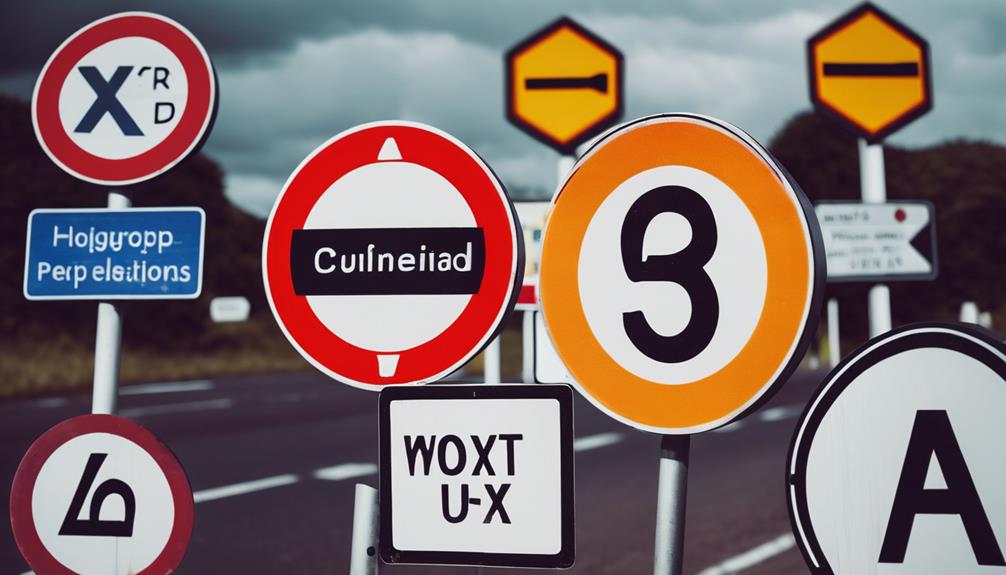
Adhering to strict regulations set by the Department for Transport, UK road signs utilize the font called Transport, specifically designed for excellent legibility at high speeds. The font choice plays an important role in ensuring that road signs effectively convey information to drivers, promoting road safety and efficient navigation.
Here are some key points regarding font regulations and guidelines in the UK:
- Consistency and Clarity: UK road sign fonts adhere to strict regulations to maintain consistency and clarity across different locations.
- Visibility Determined by Speed Limit: The font size on UK road signs is determined by the speed limit of the road, ensuring visibility from a safe distance for drivers.
- Enhanced Readability: Guidelines include specific spacing, stroke width, and letter proportions to enhance the readability of UK road signs, making them easily understandable for drivers at a glance.
Understanding these regulations and guidelines is essential for creating road signs that effectively communicate important information to drivers on UK roads.
Implications of Font Choices on Safety
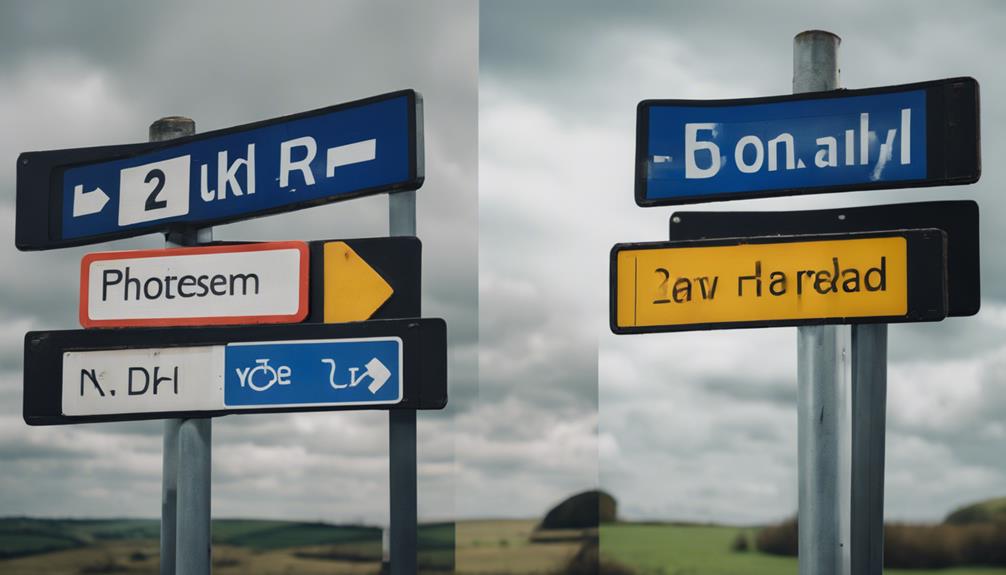
Considering the vital role font choices play in driver safety, selecting the appropriate typeface for road signs is paramount. The font on road signs impacts readability and comprehension, directly influencing safety on the road.
In the UK, the standard font for road signs, Transport Heavy, is specifically designed for the best legibility at different distances and speeds. Research indicates that using clear, easily recognizable fonts on road signs can greatly reduce driver errors and improve response times.
Factors like font size, spacing, and weight are essential in ensuring that road signs are visible and quickly understood by drivers. Additionally, the consistent use of standardized fonts on road signs helps create a familiar and predictable environment for drivers, ultimately enhancing road safety.
Case Studies: Effective Font Usage
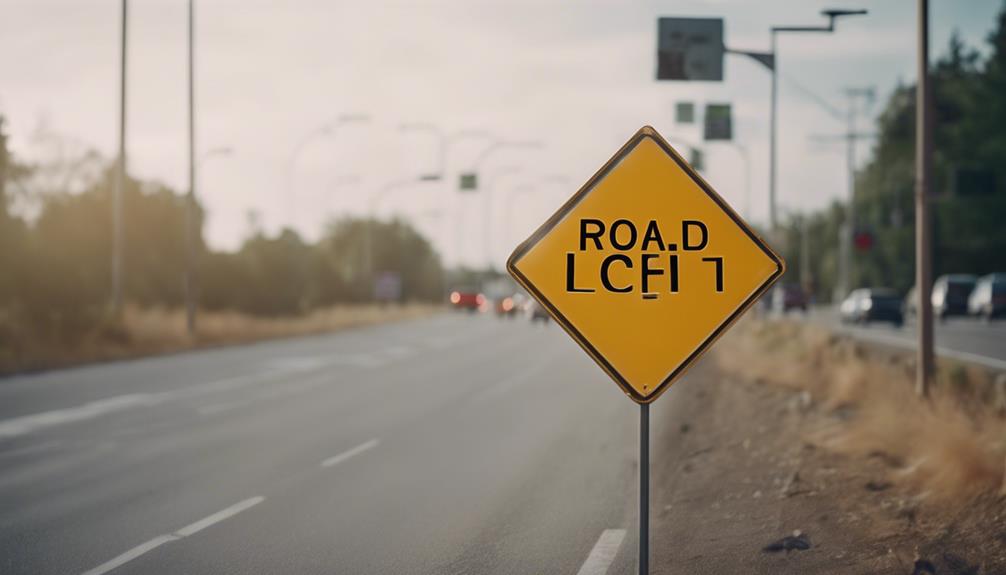
Let's explore the impact of font pairing on road sign readability and the results of readability testing in our case studies. Understanding how different fonts work together can help convey information effectively to drivers.
Impactful Font Pairing
Exploring successful font pairings on UK road signs reveals the impact of strategic typography choices on driver comprehension and safety. When pairing fonts for road signs, consider the following:
- Contrast in Styles: Using a sans-serif font for main information and a serif font for additional details can enhance visual hierarchy.
- Font Size and Spacing: Ensuring the right size and spacing is essential for legibility at various distances and speeds.
- Government Guidelines: The UK government specifies font guidelines for road signs to maintain consistency nationwide.
These factors play a significant role in the effectiveness of road sign communication, influencing how quickly and accurately drivers can interpret the information displayed.
Readability Testing Results
Research studies have consistently demonstrated the importance of fonts like Transport for road signs, showcasing improved legibility and information processing.
Fonts such as Transport, designed specifically for road signs, have been proven to enhance reading speed and accuracy. The British Transport typeface was created with the aim of improving the clarity and readability of road signs for drivers.
Readability testing results have shown that fonts tailored for road signs, like British Transport, greatly enhance information processing. By choosing fonts like Transport, drivers can increase the speed at which they read and comprehend road signs, ultimately leading to improved road safety.
It's evident that font choices play a critical role in not only the legibility of road signs but also in how efficiently information is processed by drivers.
Future Trends in Road Sign Typography

In considering the future of road sign typography, enhancing legibility and visibility for drivers is a key focus. As technology advances, we may see the integration of dynamic typography on road signs to improve communication. Additionally, the use of sustainable materials and eco-friendly practices is being explored for future road sign designs. Another exciting trend involves the potential integration of digital displays and smart technology into road sign typography, offering new possibilities for modernization.
- Dynamic typography integration for improved communication.
- Sustainable materials and eco-friendly practices in design.
- Integration of digital displays and smart technology for modernization.
Collaboration among designers, engineers, and psychologists plays an important role in shaping the future of road sign typography to promote safety and efficiency on the roads. Exciting developments lie ahead as these trends continue to evolve and enhance the way we interact with road signs for a safer driving experience.
Frequently Asked Questions
What Font Is Used on Road Signs in the Uk?
We use the Transport font on road signs in the UK. It's known for clarity and visibility at high speeds.
The font, designed by Jock Kinneir and Margaret Calvert in the 1960s, is unique with features like the open C and E.
Consistent use of Transport font across UK road signs creates a cohesive visual language for drivers.
What Font Is the Road Sign Letters?
We'll start by focusing on the current question: 'What font is the road sign letters?'
The font used for UK road sign letters is known as Transport, specifically Transport Heavy. This font was designed in the 1950s by Jock Kinneir and Margaret Calvert, commissioned by the British Ministry of Transport for better legibility on road signs.
Its unique features such as open counters and strong verticals guarantee clarity even at a distance, making it a recognizable symbol of British road signage.
What Font Are London Street Signs?
London street signs use the Transport font, a clear and bold typeface designed for road signage in the UK. This font guarantees easy readability from a distance, aiding both drivers and pedestrians.
The consistent use of the Transport font across London maintains clarity and uniformity in the city's signage system. Its familiar appearance contributes to the iconic look of London's street signs, guiding individuals efficiently throughout the bustling urban landscape.
What Font Is Used for Traffic Signs?
We use the Transport font for traffic signs in the UK. Its design prioritizes visibility and readability on the road. The uppercase letters and bold strokes enhance legibility in various lighting conditions.
This font is mandatory for all road signs to guarantee consistency and quick recognition. Its characteristics, like wide spacing and high x-height, help convey essential information effectively.
The Transport font is vital for clear communication on our roads.
Conclusion
To sum up, selecting the appropriate font for road signs is essential for ensuring safety and clarity on the roads.
For instance, in a case study conducted in the UK, using a bold, sans-serif font improved legibility and reduced driver confusion on busy highways.
By recognizing the significance of typography, we can help establish a safer environment for all road users.
Remember, font choices matter when it comes to effective signage!






